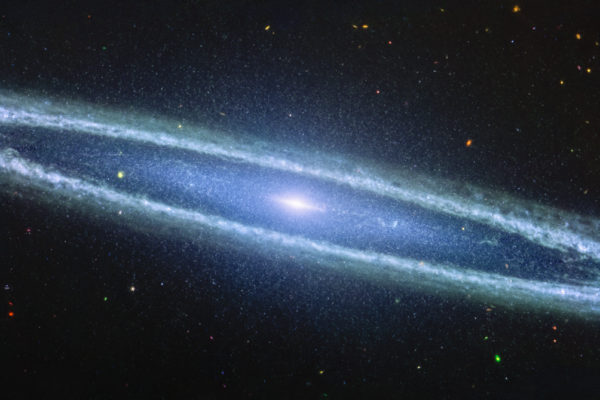Recently, in the images released by NASA, the James Webb Space Telescope captured a new and astonishing perspective of the Sombrero Galaxy. Contrary to its name suggesting a resemblance to a Mexican wide-brimmed hat, the galaxy now appears more like a bullseye, with a distinct center.
Also known as M104, the Sombrero Galaxy is located in the constellation of Virgo, approximately 30 million light-years away from Earth. It was discovered by French astronomer Pierre Mechain in 1781.
The newly released images by NASA were taken using the Mid-Infrared Instrument (MIRI) of the James Webb Space Telescope, showcasing the galaxy’s smooth inner disk instead of the shining core captured in visible light images by the Hubble Space Telescope. The high resolution of MIRI on the Webb Telescope also reveals intricate details of the outer ring of the galaxy, providing insights into the distribution of dust, a significant component of celestial bodies in the universe.
Webb’s sensitive instruments can detect celestial bodies using infrared light of different wavelengths (invisible to the human eye), unveiling cosmic details that were previously unseen.
The new findings from Webb’s observations also revealed the presence of carbon-containing molecules known as polycyclic aromatic hydrocarbons in the dust ring of the galaxy, further indicating that the outer ring of the galaxy might be a site for star formation. However, compared to other galaxies studied by the Webb Telescope, such as Messier 82 with ten times the star formation rate of the Milky Way, the Sombrero Galaxy is not a hotspot for star formation.
The annual stellar mass produced in the dust ring of the Sombrero Galaxy is less than that of a single Sun, while the Milky Way produces stellar mass equivalent to about two Suns each year.
The supermassive black hole at the center of the Sombrero Galaxy is not as active as black holes in the centers of other galaxies. It slowly consumes matter from the galaxy, emitting bright yet small radiation jets.
Additionally, the Sombrero Galaxy hosts approximately 2000 globular star clusters, clusters of ancient stars gathered under gravitational forces. This provides astronomers with a perfect setting to conduct comparative studies on stars of the same age but varying in mass and other aspects.
Equipped with MIRI, the James Webb Space Telescope can penetrate through dense dust clouds to observe the birth of stars and planets, detect the composition of exoplanet atmospheres, and investigate how galaxies formed in the early universe. Its sensitivity is a hundred times superior to the renowned Hubble Telescope, enabling observations of cosmic deep space scenes from further and earlier epochs.
(References made in this article are based on a report by CNN)

